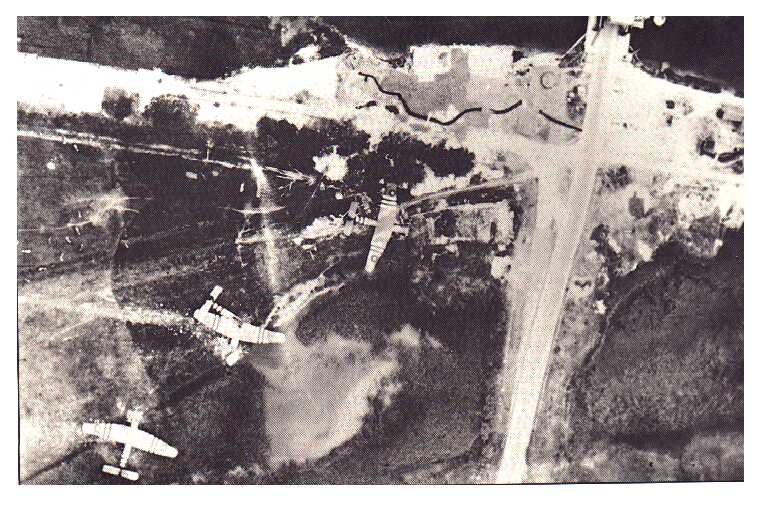
Midnight on the night the 5th-6th June 1944 is commonly seen as the time when the Allied Invasion of France started. Twenty six minutes later the Allies had struck their first blow; the capture of the bridges over the Caen Canal and the River Orne. An operation, which could potentially have been such a disaster, was carried out with amazing precision and stealth.
The German soldiers on guard on the bridges heard the gliders landing but what with Caen being so close, they put the noise down to wreckage from aircraft which had been blown up in the skies overhead. The idea of an invasion was absurd. These soldiers had patrolled the bridges for two years, why should this night be any different? Moreover these bridges were two miles inland in the middle of rural Northern France. German soldiers, who were sleeping in underground barracks when the British soldiers stormed the bridges, thought that their colleagues were playing a practical joke on them when they were awoke to be told that the Invasion had started and that they should man their positions. The Germans had been caught completely by surprise and this coupled with the extreme efficiency of the British troops meant that the Allies were well on their way to re-establishing a foothold in Western Europe.

The Canal Bridge with the three gliders
If the operation was to be a success then D Company would need to communicate with someone in England to tell them. However, with German Intelligence listening to every Radio broadcast in Europe, the signal would have to be in code. A double-barrelled code would be needed to deal with every eventuality (capture both bridges/ capture Orne bridge/ capture Caen Canal bridge). The code signal decided was Ham and Jam; Ham meant the Orne bridge had been captured, Jam meant the canal bridge had been captured. (Jack and Lard meant that the respective bridges had been captured but destroyed.)
At 00:26, not even half an hour after the first glider had crossed the French coast, the signal was sent out that D Company had achieved their aim. There were two casualties in the initial attack, one private died in the landing of one of the gliders and Lieutenant Den Brotheridge, who lead the charge across the Canal Bridge was shot by a German machine gunner.
The invasion, of course, did not end there and neither did D Company's involvement in the fighting. A German counteroffensive to try and retake the bridges took place in the early hours of the morning but was warded off. D Company had been relieved of complete responsibility by 02:00, at which time the rest of 6th Airborne had parachuted in to maintain control of the bridges. D Company remained in France for almost three months after D Day, and were merged back in as part of 6th Airborne. The soldiers in glider number five, including Howard's Second-in-Command Captain Brian Priday, who had been sent off course by their tug aircraft were presumed to be dead. However, at 04:00 on D Day they met up with Howard and D Company again, having marched many miles from their wrong Landing Zone (LZ). They had lost only five men and had been involved in being captured by the Germans and several fire fights as well. The fact that they had managed to locate the Bridges in pitch black and carrying extremely heavy rucsacs owes a great deal to Major Howard\rquote s tactics of keeping morale high and keeping his men extremely fit.